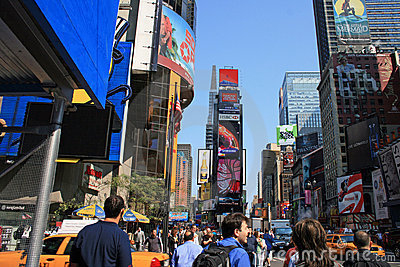The United States Census Bureau has released a report, Patterns of Metropolitan and Micropolitan Population Change: 2000 to 2010, on metropolitan area growth between 2000 and 2010. The report highlights population growth in downtown areas, which it defines as within two miles of the city hall of the largest municipality in each metropolitan area.
Predictably, media sources that interpret any improvement in core city fortunes as evidence of people returning to the cities (from which they never came), referred to people “flocking” back to the “city.”
The central cores of the nation’s largest cities are doing better than at any time in recent history. Much of the credit has to go to successful efforts to make crime-infested urban cores suitable for habitation, which started with the strong law enforcement policies of former New York Mayor Rudy Giuliani.
Exaggerating the Trend
However, to characterize the trend since 2000 as reflective of any “flocking” to the cities is to exaggerate the trend of downtown improvement beyond recognition. Among the 51 major metropolitan areas (those with more than 1 million population), nearly 99 percent of all population growth between 2000 and 2010 was outside the downtown areas.
There was population growth in 33 downtown areas out of the 51 major metropolitan areas. As is typical for core urban measures, nearly 80 percent of this population growth was concentrated in the six most vibrant downtown areas: New York, Chicago, Philadelphia, Washington, Boston, and San Francisco.
Overall, the average downtown area in the major metropolitan areas grew by 4,000 people between 2000 and 2010. Although in some cases these increases were substantial in percentage terms, the population base was generally small, the result of huge population losses in previous decades.
Urban Core Declines
The downtown population gains, however, were not sufficient to stem the continuing decline in urban core populations. Among the 51 major metropolitan areas, the aggregate data indicate a loss of population within six miles of city hall. In essence, the oasis of modest downtown growth was more than negated by losses surrounding the downtown areas.
Virtually all the population growth in the major metropolitan areas lay outside the six-mile radius core, as areas within the historical urban core, including downtown, lost 0.4 percent.
Even when the radius is expanded to 10 miles, the overwhelming majority of growth remains outside. Approximately 94 percent of the aggregate population growth of the major metropolitan areas occurred more than 10 miles from downtown. More than one-half of the growth occurred 20 miles and further from city hall.
In fact, population growth beyond 10 miles from the core exceeded the share of population in 2000, showing the continuing dispersal of American metropolitan areas
Chicago’s Gains . . . and Losses
The Census Bureau press release highlights that downtown Chicago experienced the largest gain in the nation. Downtown Chicago accounted for 13 percent of the metropolitan area’s growth with an impressive 48,000 new residents.
However, while downtown Chicago was prospering, people were flocking away from the rest of the city. Within a five-mile radius of the Chicago Loop, there was a net population loss of 12,000 and a net loss of more than 200,000 within 20 miles. Only within the 36th-mile radius from city hall was there a net population gain.
Cleveland’s Continuing Losses
In view of Cleveland’s population decline (down from 915,000 in 1950 to 397,000 in 2010), any progress in downtown Cleveland is welcome. But despite the frequently recurring reports, downtown Cleveland’s population growth was barely 3,000. The overall loss within a six-mile radius was 70,000, and 125,000 within a 12-mile radius.
Beyond the 12-mile radius, there was a population increase of nearly 55,000, which was insufficient to avoid a metropolitan area population loss.
Thirty major metropolitan areas suffered core population losses, even though many had downtown population increases. Here are some revealing facts:
- Five major metropolitan areas suffered overall population losses (Buffalo, Cleveland, Detroit, Pittsburgh, and Katrina-ravaged New Orleans).
- St. Louis, with a core city that holds the modern international record for population loss (from 857,000 in 1950 to 319,000 in 2010), experienced a population decline within a 27-mile radius of city hall. Most of the growth in the St. Louis metropolitan area was outside the 27-mile radius. Even so, there was an increase of nearly 6,000 in the population of downtown St. Louis.
- There were population losses all the way out to a considerable distance from city halls in Memphis (16-mile radius), Cincinnati (15-mile radius), and Birmingham (14-mile radius). The three corresponding downtown areas also lost population.
- Despite having one of the strongest downtown population increases (12,000), population declined within a 10-mile radius of the Dallas city hall. This contrasts with another Texas city, Houston, which also experienced a strong downtown increase (10,000) but no losses at any radius of the urban core.
- Milwaukee experienced a small downtown population increase (2,000) but had a population loss within an11 mile radius.
Due to the repurposing of old offices and other structures, sometimes aided by subsidies, small downtown slivers may have done better than at any time since before World War II. But the data is clear. Suburban growth was stronger in the 2000s than in the 1990s. The 1 percent flocked to downtown and the 99 percent flocked to outside downtown.
Used with permission of NewGeography.com.





